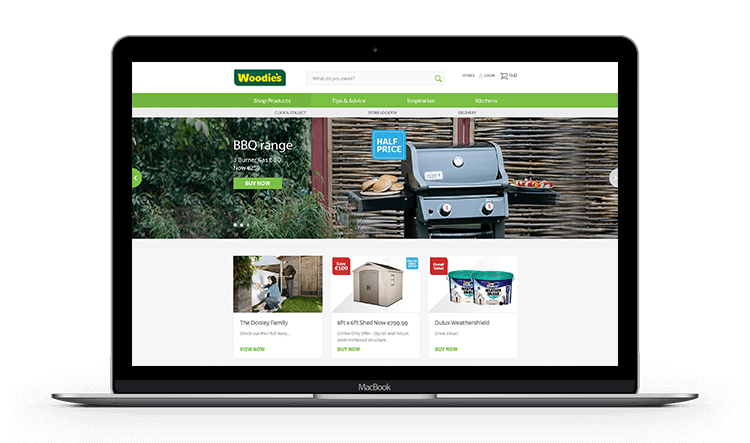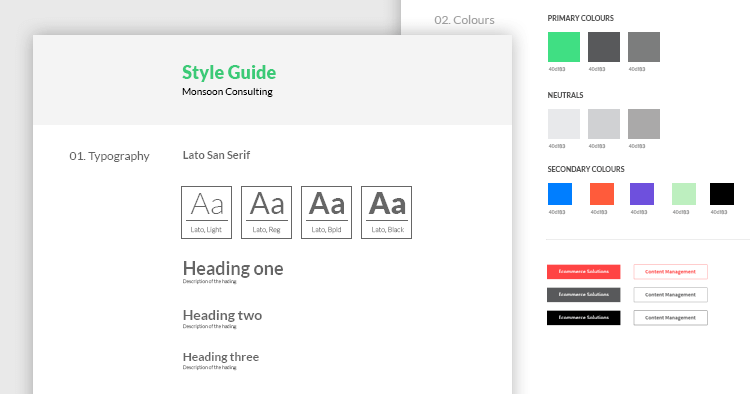Brand consistency: why it is crucial for an elevated omnichannel customer experience
Most people think of brand definition in terms of a logo or a slogan, but in this digital age, these elements are only the tip of the iceberg. Traditionally branding was a one-sided message with the flow of communication coming mainly from brand to consumer with minimal channels for connecting the two. However, this has all changed with today’s omnichannel experience, where people interact with a brand across so many touch points, from a website and mobile devices to physical locations.
The ways in which we view and communicate with a company or organisation, whether in a B2C or B2B context, is so broad and diverse. Branding is not just the visuals, it encompasses the brand’s online presence, the tone of voice and products. It is ingrained in the customer emails, the way staff interact with clients and customers, and even down to the cart/checkout process.
The brand is an experience.
Why Consistency is Key
It is a powerful influencer
A brand ultimately communicates the brand values and brand message and is key for differentiation from the competition. But it is also a brand promise, as these values (e.g. quality, reliability or cutting edge) are characteristics customers will associate with your products or service. We only have to look at the likes of Apple and see how the brand itself sells the products. Successful brands are built with a consistent delivery of this brand promise through all channels, so it is crucial that these values are based on something that can be lived up to. If done correctly, this brand personality forges an emotional connection with customers, even in the B2B e-commerce industry, creating brand loyalty and influencing repeat business.
It portrays dependability
With increasing competition in all markets it is so important for companies to stand out from the crowd, and to do this they must provide their customers with a holistic and consistent user experience. You would not continue to buy your morning coffee from a coffee shop that had consistently rude staff or long queues, no matter how much you loved the coffee. As most brands now have a web presence, and especially with e-commerce businesses, customers are interacting mainly online with companies so this experience becomes integrated with the brand in people’s minds. In their definition of user experience, Don Norman and Jakob Nielsen suggest that “user experience encompasses all aspects of the end-user’s interaction with the company, its services, and its products.”
The online interactions and user experience (UX) of the website become characteristics of the brand just as much as the offline communications with customers, so this experience needs to be one that reflects the brand values and is consistently dependable. Like the coffee shop example above, with inconsistent dependability, it won’t be long before you move to another establishment for your morning caffeine hit.
It creates confidence and trust
As mentioned earlier, the channels in which companies interact with their customers is so diverse. People now have access to brands like never before. Consistency across these touch points is crucial to building brand trust. If your bank manager arrived to meetings in gym gear one day and his pajamas the next your trust in him may be questioned, you may not be so quick to invest your hard-earned money. It is the same for a brand, the ways in which a business presents itself across social media, website, in person etc., needs to be consistent so customers feel they are talking to the same familiar and trusted company.
Here are a few tips on how greater consistency can be achieved:
Visual Consistency - How the brand looks
Developing brand guidelines
Even in small businesses, is important for keeping consistency over the style and usage of the branded elements. These guidelines are not just for designers or marketing departments, they should serve as a guide to all employees and even to external bodies. These guidelines should be based on the brand values and brand promise, so keeping a tight focus on these will ensure all elements of the brand are aligned.

Use a consistent image / illustration / UI style
The visual style of the secondary elements of your brand such as imagery or iconography can become just as powerful as the logo. Take the example of Spotify, their image style has now become just as recognisable as the branding itself. The same can be achieved with a website’s user interface (UI), developing a style guide will ensure consistency will become closely associated with the brand.

Tone of Voice - How the brand sounds
A consistent and unified brand message across all channels is essential to building trust with customers. With the multi-channel ways in which people purchase and access brands the content presented to them needs portray the right personality. If your brand is approachable and friendly on Twitter, it should have the same flavour on other channels. Always keeping the brand promise, values and guidelines at the core will ensure consistency letting customers know they are in communication with the same familiar business.
User Experience - How the brand behaves
This aspect of a brand is becoming increasingly important, particularly in the e-commerce world. People trust and perceive brands based on their entire experience with the business. User experience and usability have a big impact on influencing customers, so paying attention to (and solving) pain points and issues is crucial to retaining and developing customers. Clear consistent communication and interactions aligned with the brand characteristics and values are as essential as the brand guidelines. It is all part of the brand experience.

Sources
The Impact of Interaction Design on Brand Perception, Nielsen Norman Group, by Kate Meyer
Brand Is Experience in the Digital Age, Nielsen Norman Group, by Kate Kaplan




